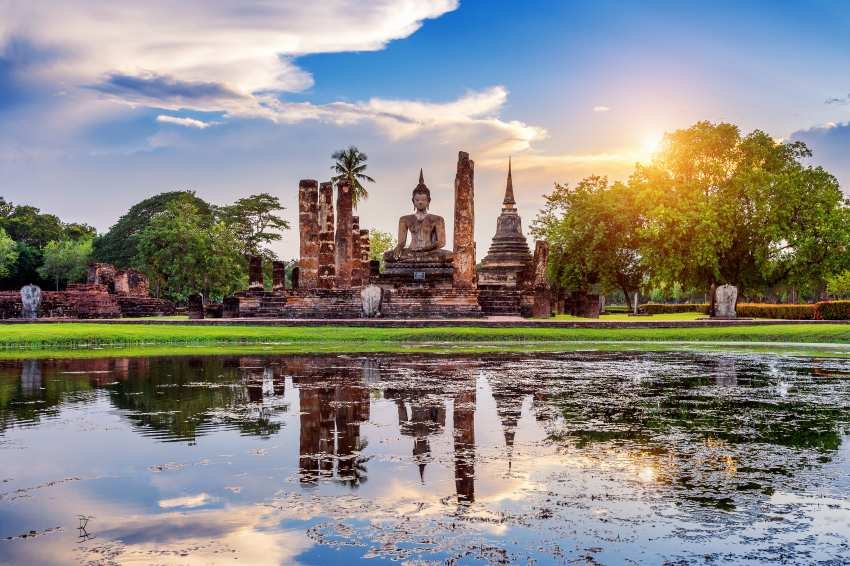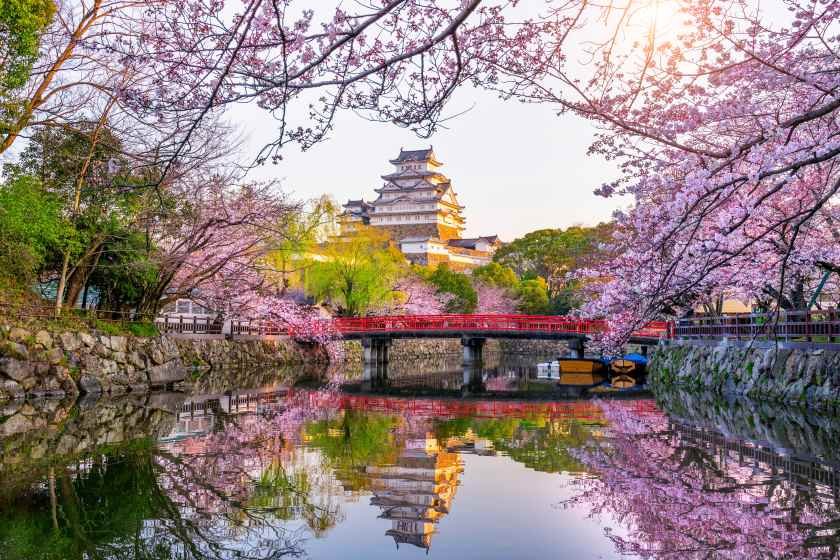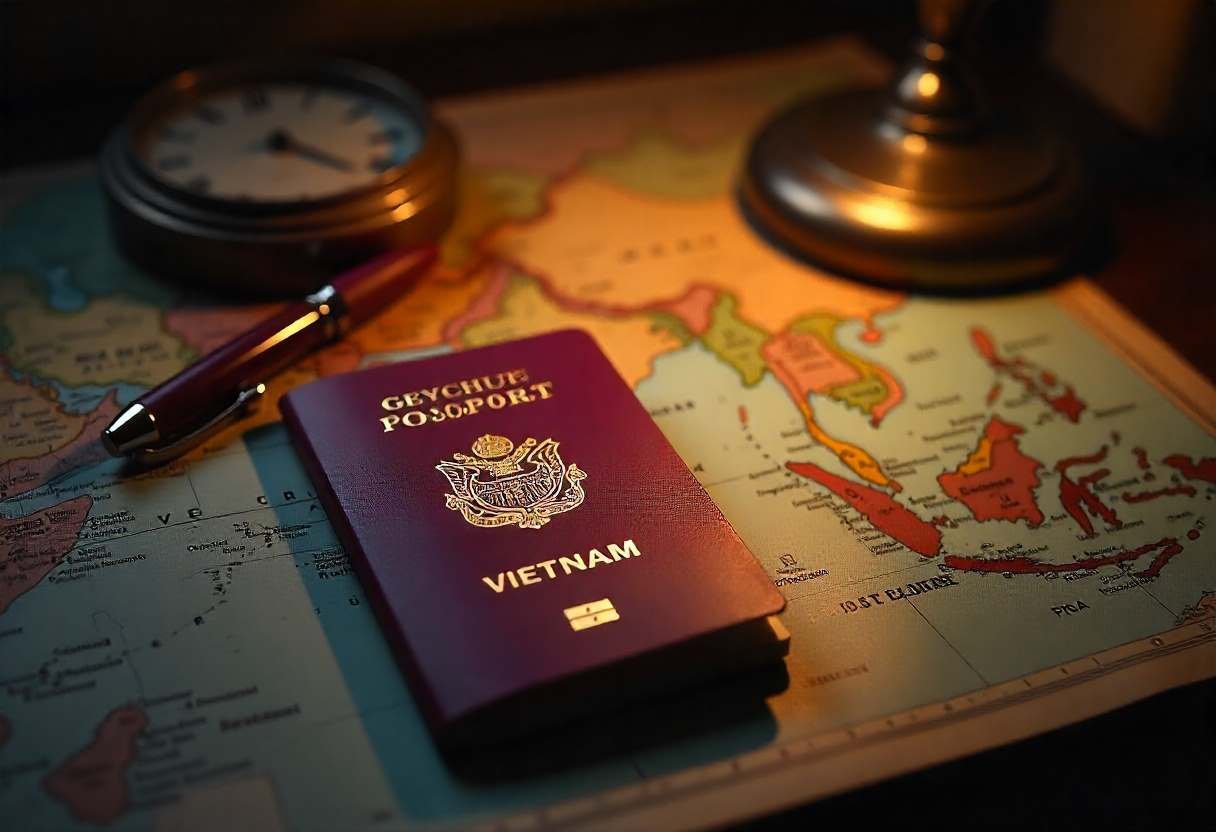Asia Travel Pulse
Now, Huge Arrival Surge From Malaysia, China, India, Russia, South Korea, Japan, Singapore, UK, Germany, France, Australia, US, Taiwan, Hong Kong And Indonesia, Fueling Record Tourism In Thailand: Here’s What You Really Need To Know

Wednesday, July 23, 2025
With its beaches in Phuket and its markets in Chaing Mai soaked in golden sunlight and the murmurs of more than a dozen languages reverberating through its bazaars, Thailand’s 2025 tourism resurgence has started to crystallise. Irina Volkova, 60, a visitor from St. Petersburg, was among the travelers to arrive, her third trip here in five years. Her travels, like those of millions of others, are part of a surging wave of tourism that has been rolling through the country this year.
Fuelled by travelers from 15 leading source markets — Malaysia, China, India, Russia, South Korea, Japan, Singapore, the UK, Germany, France, Australia, the US, Taiwan, Hong Kong, and Indonesia — Thailand is set to cross a highest pre-pandemic tourist arrival landmark. On tranquil beaches in Krabi and in the pulsating center of Bangkok, the open borders mean foreign tourists are once more filling up hotels, winding through the night markets and spending money on the redemption of experiences benefiting thousands of those Thai livelihoods.
A Closer Look at the Numbers
Thailand received over 35.5 million inbound visits in 2024, a dazzling recovery from the pandemic years. This year, it is taking things one step further as it has set an ambitious goal of attracting 39 million tourists by the end of 2025. According to mid-year numbers from the Ministry of Tourism and Sports, over 16.6 million tourists had already come by July, and the high season travel months were yet to come.
Visitor volume is still led by Malaysia, with China and India following closely. The three markets together had over 10 million arrivals in 2024, and continued to dominate in Q1 of 2025. It noted that Russia, despite facing economic sanctions and geopolitical rivalry, has had its tourists to Thailand still on the rise, with more than 1.08 million Russians coming by July 20, which was the fourth largest international market.
Why Tourists Keep Coming Back
Combining affordability, accessibility and an immersive experience, it is clear why Thailand has become such a long-standing favourite. With budget backpackers at one end and luxe-seekers at the other, the country comes in shades to fit every lifestyle and wallet.
Chinese tourists are attracted to cultural and spiritual experience, visiting temples and unesco-listed heritage sites. Indian families fly for weddings, wellness retreats and shopping. Russian tourists, who travel to warn climes of Thailand, particulary Phuket, Krabi and nearby islands during Europe’s cold winter months.
The United Kingdom, Germany and France maintain a robust flow of European tourists, especially during Thailand’s relatively dry season from November to March. Meanwhile, travelers from Australia and the United States are taking longer, more immersive trips, encouraged by favorable exchange rates and by remote work policies that have been extended.
Improved air links and easier travel are contributing to the increasing numbers
Greater air access has aided international arrivals. Thailand’s airports have been gradually expanding capacity since late 2023. Charter aircraft from Russia will start to increase a lot in the fourth quarter, especially to Phuket and U-Tapao International Airport. And other paths from Indian metros, Chinese provinces and European cities have also opened up.
Thailand visa waiver and e-visa services have made entry easier than ever. Indian passport holders, for example, enjoy relaxed visa regulations, and the period of stay for those flying in from China, Taiwan, or Russia has been increased. Airport congestion, logistics challenges and administration burdens have been reduced with the addition of Thailand’s digital arrival card in 2025.
Tourism’s Multiplier Effect on the Economy
The inbound tourism rush is having a huge economic impact. Tourism already makes up close to 12% of Thailand’s GDP and is one of the key foundations of the national economy. Foreign tourists contributed more than 768 billion baht in revenue in the first half of 2025 alone, the Ministry of Finance said.
Hospitality, food and beverage, and transport jobs have rebounded strongly. Small operations, whether homestays, cottage industries or food outlets — especially in non-metropolitan areas such as Mae Hong Son or Nakhon Si Thammarat — are enjoying fresh streams of international tourist revenue. This more wide-spread spread of tourism wealth is contributing to narrowing the economic gap among the regions.
Spending on infrastructure is also increasing. There are currently various airport expansions, seawall facilities and eco-tourism projects in progress. These enhancements are coming to meet the growing tourists number on the one hand, and on the other hand to avoid environmental pressure and guarantee security and sustainability.
The Revival of Tourism: Russia’s Role
Thailand remains one of the most popular travel destination for Russians, even after sanctions and economic hardship. Affluent Russians, unfazed by currency fluctuations or political uncertainty, remain eager to travel, TAT’s Moscow office says. A good number are return visitors, returning for Thailand’s warm climate, health care facilities and kid-friendly institutions.
Vietnam’s beaches, such as those in Nha Trang and Phu Quoc, have become popular with Russians. But infrastructure and greater range of hotel options is still the edge that Thailand has. Phuket in particular is still a key port of entry for long-haul visitors, as are newer hubs such as Krabi and Phang Nga.
Some Russians are also opting to head to mountainous areas such as Chiang Mai and Chiang Rai for lengthier stays. As Thailand continues its campaign to present itself as a year-round destination, these less-visited provinces are attracting long-stay and return visitors.
Challenges and Competitive Pressures
Thailand isn’t the only country trying to lure international tourists. Vietnam, Malaysaia, Indonesia, Philippines are all vying aggressively for a share of the Southeast Asian Tourism market. In particular, Vietnam has poached some of Russia’s summer charter flights, reducing seat supply to Thailand by 10% versus a year earlier.
Yet, Thailand still has a competitive edge with a wide range of choices, the modern amenities, rich culture and safe urban settings that it has. The agency is closely looking into the market flow and monitoring travel trends with plans to set strategies into action before winter – the peak season for Russian and European tourists.
Towards a Sustainable and Inclusive Tourism Model
With increasing arrivals, Thailand is confronted with the problems of making tourism development sustainable, just and environmentally conscionable. There are policies to promote low-carbon tourism, promote the digital transformation of local services, and support community-based hospitality projects.
Initiatives such as “Amazing Thailand Year 2025” are encouraging travelers to visit lesser known areas, to support the local craft industry and to participate in activities which are eco-friendly. These are not only designed to safeguard the country’s natural and cultural riches, but also to build long-term economic resilience in tourism.
Final Thoughts: The Numbers’ People
Behind the numbers and forecasts are personal tales of discovery, thankfulness and joy. From solo travelers going for Thai massage and jungle treks to families taking boat rides and eating spicy food by the sea, every tourist brings something to Thailand — and takes something home in the process.
For Irina Volkova, visiting Phuket in July after having been kept away there was more than a vacation, but a reunion with a country that is “a place that always feels like it’s waiting for me,” she says. For the million more Filipinos like her who work there, Thailand is more than a destination. It’s a second home, a celebration of culture and a repository of shared memory.
References
Tourism Authority of Thailand, Ministry of Tourism and Sports Thailand, Thailand Ministry of Finance.
Tags: Australia, china, Chinese visitors Thailand, france, germany, Hong Kong, India, India to Thailand travel, indonesia, japan, malaysia, Russia, Russian tourists Thailand, Singapore, south korea, Southeast Asia travel recovery, Taiwan, TAT tourism targets, Thailand, Thailand tourism 2025, top visitor countries Thailand, United Kingdom, United States
Asia Travel Pulse
The Witcher In Concert To Make Asian Debut In Singapore: Details Inside

Fans of dark fantasy and epic soundtracks, mark your calendars! The Witcher In Concert is set to make its highly anticipated Asia debut in Singapore with two exclusive performances at the Sands Theatre, Marina Bay Sands, on November 29 and 30, 2025. The concert marks the 10th anniversary of The Witcher 3: Wild Hunt, the award-winning action role-playing game that has captivated over 75 million players worldwide. Following a successful tour through North America and Europe, the live orchestral production now arrives in Asia, with Singapore as its first stop.
Also, bookmark our guide to the most stunning locations in Singapore for an IG-forward exploration of the city.
The Witcher In Concert comes to Singapore: What to expect
The Witcher in Concert is coming to Asia! First stop: Singapore! 🎻
For the first time in Asia, the iconic music of The Witcher 3: Wild Hunt will be performed live, and it’s all happening in Singapore still this year!
The concerts will take place at the Lyric Theatre on… pic.twitter.com/rGuOW550g4
— The Witcher (@thewitcher) July 23, 2025
Presented by Base Entertainment Asia in collaboration with CD Projekt Red, Gea Live and RoadCo Entertainment, the event brings the music and story of The Witcher to life. Tracks are arranged by The Witcher 3 co-composer Marcin Przybyłowicz and performed by a live ensemble orchestra. Joining them on stage is Polish folk metal band Percival Schuttenbach, whose musical contributions helped shape the game’s distinctive score.
The concert follows Geralt of Rivia’s quest to find his adopted daughter Ciri, offering fans an atmospheric and emotionally charged journey through the world of The Continent. The Witcher in Concert performance in Singapore runs for two hours, including a 20-minute intermission.
- Where: Sands Theatre, Marina Bay Sands, 10 Bayfront Avenue
- When: November 29 at 2 pm and 7:30 pm; November 30 at 6:30 pm
- Admission: From SGD 92 (USD 71)
- Early bird offers are available to Development Bank of Singapore (DBS) and Post Office Savings Bank (POSB) Cardmembers and Singtel subscribers from July 23 to August 31, 2025. Tickets are available via the official show, Marina Bay Sands, Sistic, and Klook.
(Feature image credit: The Witcher/Facebook)
Related | Music Concerts And Festivals In Singapore That Should Be On Your Radar In 2025
Note:
The information in this article is accurate as of the date of publication.
Written By
Asia Travel Pulse
Japan now Issues Heightened Travel Advisory for Thailand-Cambodia Border Amid Military Tensions

Sunday, July 27, 2025
The Ministry of Foreign Affairs of Japan, in the light of the recent military confrontations between the Kingdom of Thailand and the Kingdom of Cambodia, raises the travel warning (level 2) previously issued for the Thailand-Cambodia border to level 3, advising Japanese nationals not to travel to the area. The advisory extends to any area within 50 kilometers of the Thai border, or within 30 kilometers of the Cambodian border.
The surge in violence, which began on Thursday, has left over 30 people dead and more than 110,000 forced to flee and as of now, there have been no deaths of Japanese citizens. Japan has warned its citizen about travel to the region and remains in close contact with the situation.
Details of the Ongoing Conflict
The fighting broke out as a result of a territorial dispute between Thailand and Cambodia over the disputed border near the Ta Muen Thom temple. The disagreement has resulted in heavy fighting that has involved artillery, landmines and airstrikes. Each side accuses the other of crossing territorial lines, and the violence has led to heavy casualties for both sides. There have been growing international calls for a ceasefire, but the fighting rages on despite the desperate appeals.
In addition to concerns about citizens and foreign nationals living and being in the affected areas on both countries, considerations have also been abroad for foreigners visiting in the battlefield regions, such as tourists and business travelers. Thailand-Cambodia border crossing is an outlet for tourists in Southeast Asia to visit the historical and cultural options available in both countries. The conflict has not only upended daily life but also the region’s tourism industry, with possible ripple effects for travel in Southeast Asia in the future.
Japan’s Travel Advisory and Recommendations
The latest fighting prompted Japan’s Foreign Ministry to issue a Level 3 travel advisory for the vicinity of the Thailand-Cambodia border. The warning urges Japanese to cancel or postpone travel to the region, and if currently in the affected areas to exercise extra caution.
There are roughly 450 Japanese people living in the disaster areas, the ministry added. The Japanese embassy has been helping its citizens with possible support, and those in need of help are requested to contact the embassy. The embassy also urges Japanese citizens to stay in contact with their embassies to keep abreast of the situation and to receive assistance quickly in case of need.
Based on the writing, the Ministry still recommend its people to avoid border area until something changes. They also advise that Japanese citizens get the latest information from local news and to comply with instructions provided by the local authorities, and not to make any unnecessary trips.
Tourism Impact and Border Closures
The continuing war has serious implications for tourism in the area. The border between Thailand and Cambodia is a major gateway for tourists who come to see ancient monuments, such as the Unesco World Heritage-listed Angkor Wat in Cambodia and the cultural sites in the Thai provinces bordering the northeast.
Closing of vital border points, including common transit points for international passengers, has also been temporarily halted due to the current military clashes. This has disrupted the tourist flow between the two countries, and resulted in a major disruption of cross-border travel. Tour operators and travelers have been urged to verify border crossings before booking.
Both countries are popular to tourists – and millions are attracted there every year to take in the rich fare of their exotic cultures and picturesque regions. Tourism flow in the region is likely to be disrupted as the war persists. Each story is harrowing, yet real. It is a must read for travelers who had plans to visit either Thailand or Cambodia, especially along the border or the vicinity, to temporarily postpone their plans until all is settled.
In addition, travel-related disruptions can impact the hospitality sector, such as hotels, restaurants and transport services, especially in border areas. The Thai and Cambodian tourist industries are cooperating with local officials to ensure tourists can still visit other parts of each country safely.
Global Response and Attempts to Control the Epidemic
The escalating conflict has drawn concern from the international community, led by the U.N. and the Association of Southeast Asian Nations (ASEAN). ASEAN demands ceasefire talks and asks both Thailand and Cambodia to reduce tensions. The US has also reiterated support for diplomatic and peaceful resolutions to the dispute.
For visitors, these diplomatic endeavors might just pay off in a more stable region. If ASEAN can help broker cease fire or resolution then may be travellers can return again as safe to travel. Tourists are advised to keep an eye on the news and government statements if they are travelling in the region and stay updated on any changes in travel recommendations and border situations.
What the Ongoing Clashes Mean for Tourists
While the travel advice only applies to Japanese, it is also part of the wider fallout from the hostilities that are hitting the entire Southeast Asian tourism sector. Foreign visitors who might have hoped to add the site to their travel itineraries, particularly tourists from overseas who have been drawn to Cambodia or Thailand’s northeastern provinces for cultural experiences, have been rethinking their plans due to the conflict.
Beyond the border closures, the violence has halted transport services such as buses, trains and flights, especially in the affected regions. International airlines flying in and out of the area have had to modify their timetables to meet fluctuations in demand and travelers should check for any cancellations or delays before leaving.
Conclusion
Japan’s Foreign Ministry says escalating violence at the border between Thailand and Cambodia has forced it to issue a Level 3 travel warning to its citizens, advising them not to travel to the disputed area. As a result of the conflict, the tourism flow between Thailand and Cambodia has been crippled, with many locals dependent on the travel and entertainment industries being forced to give up on their lives.
Travellers intending to be in the area are encouraged to stay informed of the situation and make their travel plans accordingly. The tourism sectors of Thailand and Cambodia are likely to be affected by the conflict in the short term, but international organizations and diplomatic discussions could restore stability to the region. As circumstances evolve, travelers should visit official government sources for the most current information on travel advisories and the statuses of their border crossings.
(Source: Japan Tourism.)
Asia Travel Pulse
Vietnam Rises in Global Passport Index, Now Offering Fifty One Visa-Free Travel Options

Sunday, July 27, 2025
Vietnamese passport holders now enjoy significantly greater global travel freedom, with the country ranking 84th in the latest Henley Passport Index and gaining access to 51 destinations without a traditional visa. This elevation reflects Vietnam’s growing diplomatic integration and efforts to streamline passport systems.
For students heading abroad, families planning holidays, businesspeople attending overseas conferences, and workers seeking opportunities, this news opens doors and simplifies travel planning in ways that matter personally.
Government Confirmation & Index Methodology
Vietnam’s leap from 91st to 84th place in the Henley Passport Index was publicly endorsed by the Vietnam Government Portal (VGP). Official statements confirm that Vietnamese citizens can now enter 51 out of 227 destinations visa-free or with e‑Visa, electronic travel authorization, or visa-on-arrival arrangements.
The Henley Passport Index, published quarterly, tracks global mobility using exclusive data from the International Air Transport Association (IATA). It rates passports based on travel freedom, measuring access to destinations without needing a visa in advance.
What This Improvement Means for Citizens
Vietnam’s improved ranking is the result of active diplomacy, upgraded biometric passports issued since 2023, and enhanced trust from foreign governments. These elements opened new unilateral visa arrangements and strengthened international confidence in Vietnamese travelers.
For individuals, this means fewer visa interviews or embassy visits and simplified routes to studying, working, or touring abroad. As outbound travel surged—over 4 million Vietnamese travelers in the first half of 2025 (up nearly 54% year-on-year)—faster entry procedures support mobility and align with rising demand.
Visa-Free Destinations: Regional and Global Access
Vietnamese passport holders can travel to a broad range of countries without prior visa arrangements, including:
- ASEAN nations: Thailand, Indonesia, Malaysia, Singapore, the Philippines, Laos, Cambodia, Myanmar
- Central & South Asia, Middle East: Kyrgyzstan, Kazakhstan, Tajikistan, Iran, Maldives
- Africa & Latin America: Kenya, Madagascar, Panama, others under electronic or arrival visas.
This list also includes destinations offering easy e‑Visa, ETA, or VOA access, allowing more seamless entry and strengthening regional links.
How Diplomacy, Tech & Reputation Drove the Rise
Vietnam’s foreign ministry and travel experts cite a combination of factors: upgraded biometric e-passports, discreet but effective diplomatic engagement with several countries, and positive global image of Vietnamese travelers as courteous and law‑abiding visitors.
These elements motivated bilateral agreements that eliminated pre-departure visa requirements, facilitating access across a diverse set of countries.
Real Citizens Benefiting from Easier Travel
For Nguyen Anh—a university student in Ho Chi Minh City—the new visa-free access to ASEAN and Central Asian countries made possible an internship in Kuala Lumpur, without embassy delays. “It cut through red tape and cost, making my trip feasible,” she says.
For family vacationers or first-time travelers in provinces like Da Nang or Hanoi, streamlined access brings peace of mind, lower costs, and the ability to plan in just days rather than weeks.
Travel Boom Accompanies Passport Uplift
Vietnam’s outbound travel volumes increased nearly 54% in the first six months of 2025 compared to the same period in 2024, reaching over 4 million travelers. This surge reflects pent-up demand and the attractiveness of simplified international mobility.
Tourism operators and educational institutions report stronger inquiries from Vietnamese citizens planning trips to countries now visa-free or offering arrival-based visas.
Looking Forward: Strategy to Further Boost Mobility
Vietnam plans to pursue visa-free or visa‑on-arrival access with additional countries, expand diplomatic agreements—especially in Europe and South Asia—and enhance digital infrastructure for passport issuance and travel information.
Officials also emphasize responsible travel and adherence to regulations, reinforcing Vietnam’s positive standing abroad as it pursues higher global ranking in future Henley editions.
Human Perspective & Broader Integration
This mobility boost is more than administrative—it connects families, enables educational exchanges, business collaboration, cultural dialogue, and deeper integration into global society. The passport no longer just documents identity; it represents access and inclusion.
Conclusion
In simple terms: Vietnam’s passport now ranks 84th in the world, offering visa-free or simplified entry to 51 destinations. This leap reflects strategic diplomacy, modern passport infrastructure, and rising global confidence in Vietnamese travel. It marks an important milestone in Vietnam’s integration into the world community—and brings real benefits to students, tourists, professionals, and families seeking global connection.
-

 Brand Stories7 days ago
Brand Stories7 days agoBloom Hotels: A Modern Vision of Hospitality Redefining Travel
-

 Brand Stories2 days ago
Brand Stories2 days agoCheQin.ai sets a new standard for hotel booking with its AI capabilities: empowering travellers to bargain, choose the best, and book with clarity.
-

 Destinations & Things To Do1 week ago
Destinations & Things To Do1 week agoUntouched Destinations: Stunning Hidden Gems You Must Visit
-

 AI in Travel1 week ago
AI in Travel1 week agoAI Travel Revolution: Must-Have Guide to the Best Experience
-

 Brand Stories3 weeks ago
Brand Stories3 weeks agoVoice AI Startup ElevenLabs Plans to Add Hubs Around the World
-

 Brand Stories2 weeks ago
Brand Stories2 weeks agoHow Elon Musk’s rogue Grok chatbot became a cautionary AI tale
-

 Destinations & Things To Do2 days ago
Destinations & Things To Do2 days agoThis Hidden Beach in India Glows at Night-But Only in One Secret Season
-

 Asia Travel Pulse3 weeks ago
Asia Travel Pulse3 weeks agoLooking For Adventure In Asia? Here Are 7 Epic Destinations You Need To Experience At Least Once – Zee News
-

 AI in Travel3 weeks ago
AI in Travel3 weeks ago‘Will AI take my job?’ A trip to a Beijing fortune-telling bar to see what lies ahead | China
-

 Brand Stories3 weeks ago
Brand Stories3 weeks agoChatGPT — the last of the great romantics













You must be logged in to post a comment Login